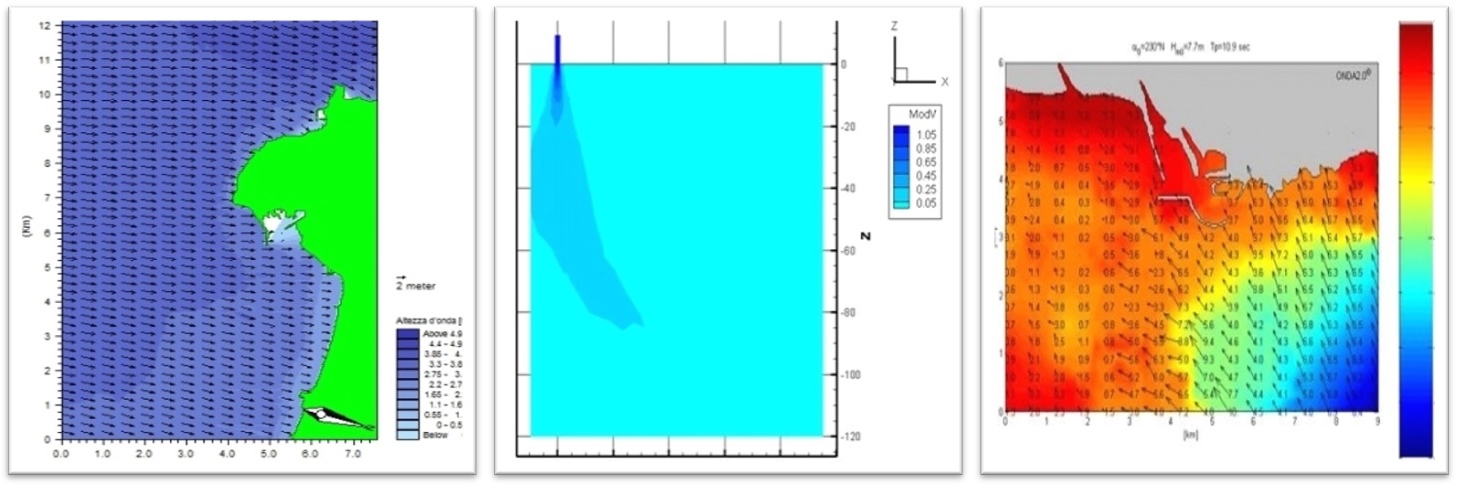Softwares
- OpenFOAM®:
OpenFOAM is a free, open source CFD software developed primarily by OpenCFD Ltd since 2004, distributed by OpenCFD Ltd and the OpenFOAM Foundation. OpenFOAM has an extensive range of features to solve anything from complex fluid flows involving chemical reactions, turbulence and heat transfer, to acoustics, solid mechanics and electromagnetics. Read more
- WAVEWATCH III®:
WAVEWATCH III® (Tolman 1997, 1999a, 2009) is a third generation wave model developed at NOAA/NCEP. Read more
- XBeach®:
XBeach is a two-dimensional model for wave propagation, long waves and mean flow, sediment transport and morphological changes of the nearshore area, beaches, dunes and backbarrier during storms. Read more
- SWAN®:
SWAN is a third-generation wave model, developed at Delft University of Technology, that computes random, short-crested wind-generated waves in coastal regions and inland waters. Read more
- MIKE21®:
MIKE 21 is a versatile tool for coastal modelling, developed by DHI. It can be used to imulate physical, chemical or biological processes in coastal or marine areas. Read more
- CEDAS:
CEDAS is a software package for simulating the coastal dynamics. it comprises the softwares: ACES, EST, Reliable, NMLong-CW, DYNLET, SBEACH, BMAP, RMAP, NEMOS, GENESIS, and RCPWAVE. Read more
- ROMS: (Regional Oceanic Model System)
ROMS is a free-surface, terrain-following, primitive equations ocean model widely used by the scientific community for a diverse range of applications. ROMS includes accurate and efficient physical and numerical algorithms and several coupled models for biogeochemical, bio-optical, sediment, and sea ice applications. Read more
- ONDA-2.0
ONDA-2.0 (Cappietti, 2003) is a numerical model for simulating wave proagation from deep to shallow waters. It is based on the parabolic approximation (Radder, 1979) of the mild-slope equation (Berkhoff nel 1972). It can be used in order to simulate the wave refraction, diffraction and energy dissipation due to bottom friction (Putnam Jonsson, 1949, Swart, 1974) and breaking (Battjes-Janssen, 1978). The numerical solution is based on the approach proposed by Kirby (1986) and the numerical technique proposed by Hirsch, (1991).



